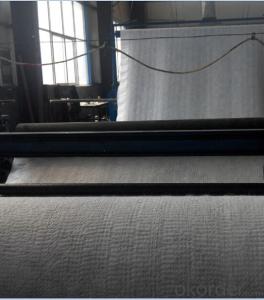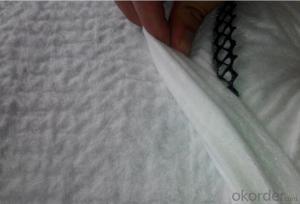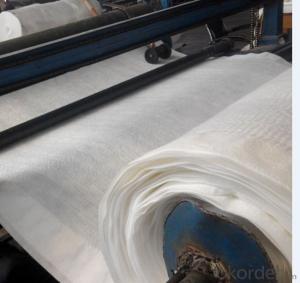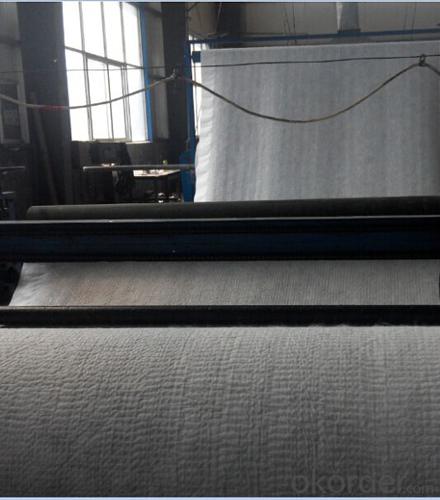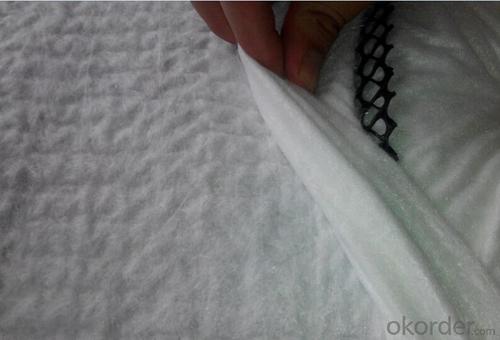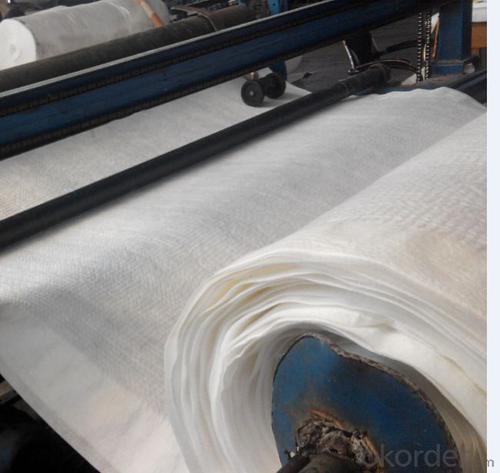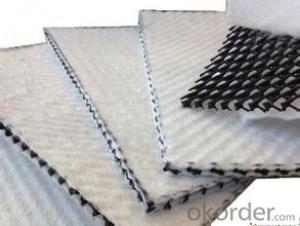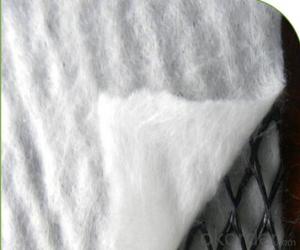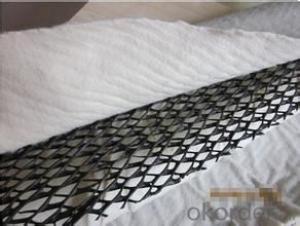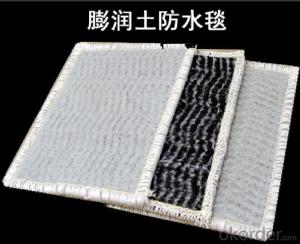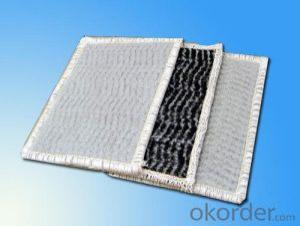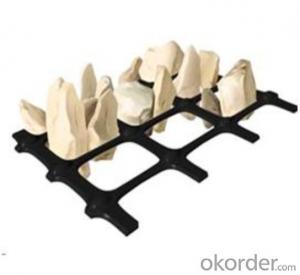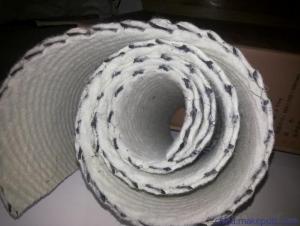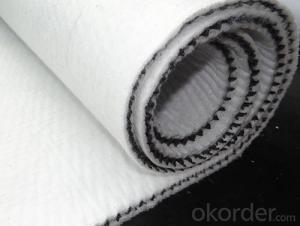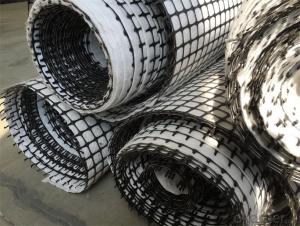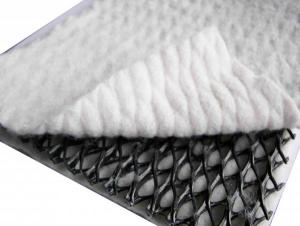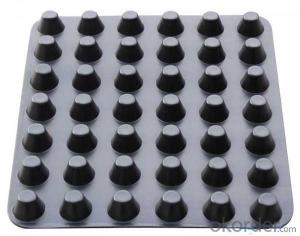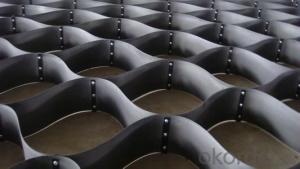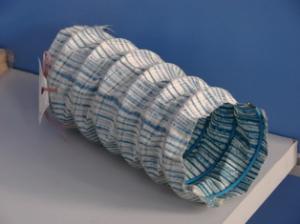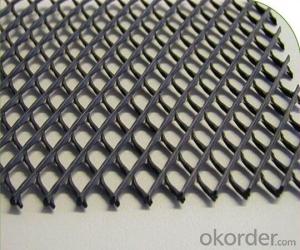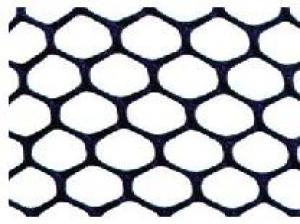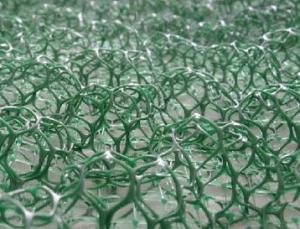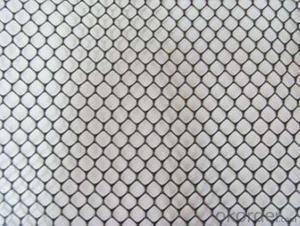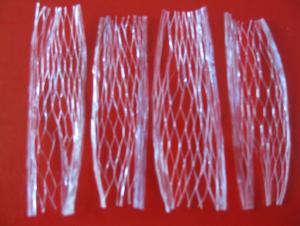Tri Dimensional Composite Drainage Geonet for Landful Drainage and Roadbed Use
- Loading Port:
- Qingdao
- Payment Terms:
- TT or LC
- Min Order Qty:
- 2000 m²
- Supply Capability:
- 200000 m²/month
OKorder Service Pledge
OKorder Financial Service
You Might Also Like
Landfill Geocomposite Drainage Geonet
Introduction
Three-dimensional composite drainage network is one three-dimension geonet composited two needle-punched non-woven geotextiles. Offering completely functions “filter-drainage-protection”. This kind of special three-dimensional structure can make it bear higher compression loading and keep certain thickness and same time offer excellent permeable performance.
Features
1. Excellent drainage and sustain high compression loading
2. Highest tensile strength and shearing strength
3. Cut down ratio of geotextile into geonet and keep stable permeability in a long time
4. It can bear compression loading over 2000Kpa
5.Its compressive strength far exceeds general drainage geonet
Application
Using for drainage such as refuse landfill, roadbed & road surface, railway, tunnel, underground structure, retaining wall, garden, sports ground and so on.
Technical Data
Drainage network core | units | Specification | ||||
Unit weight | g/m2 | 750 | 1000 | 1300 | 1600 | |
Thickness | Mm | 5.0 | 6.0 | 7.0 | 7.6 | |
Hydraulic conductivity | m/s | kx10-4 | Kx10-4 | Kx10-4 | Kx10-4 | |
Elongation | % | 50 | 50 | 50 | 50 | |
Tensile strength (core netwaork) | kN/m | 8 | 10 | 12 | 14 | |
Geotextile | g/m2 | Heavier grades of geotextiles can be bonded to geonet on request | ||||
FAQ
1.How about the delivery time?
Lead time since receipt of 30% T/T deposit payment: 2-3 weeks. (Samples will be prepared within 3 days.)
2. What kind of payments does jenor support?
T/T, L/C, Cash are accepted.
3. What's are the MOQ?
We can according to your condition to set the MOQ. and we can provide you samples for quality inspection before the mass production.
4. Do you charge for the samples?
Accordeing to our company policy, the samples are free, we only charge the freight fee.
5. Can you produce according to customers' design?
Sure, we are professional manufacturer, OEM and ODM are both welcome.
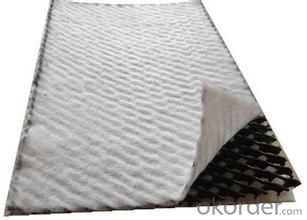
Other geosynthetics:
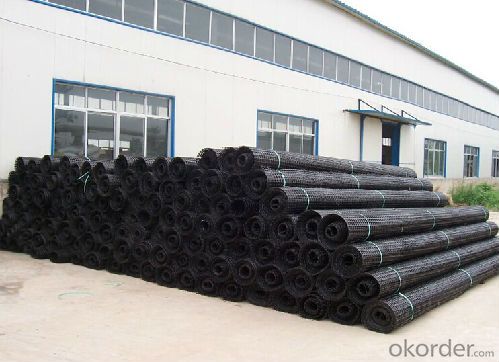


- Q: Are earthwork products suitable for use in riverbank stabilization projects?
- Yes, earthwork products are suitable for use in riverbank stabilization projects. These products, such as geotextiles and geogrids, provide reinforcement and erosion control to prevent the riverbank from collapsing and help maintain its stability. Additionally, earthwork products are designed to withstand water flow and provide long-lasting support, making them a viable solution for riverbank stabilization projects.
- Q: Can earthwork products be used for canal construction?
- Yes, earthwork products can be used for canal construction. Earthwork products such as soil, rocks, and other materials can be excavated and utilized to build the embankments, berms, and other structures necessary for canal construction. These materials can also be used for lining the canal bed and creating the required slopes.
- Q: Are earthwork products suitable for agricultural drainage systems?
- Yes, earthwork products such as drainage tiles, culverts, and channels are commonly used in agricultural drainage systems as they effectively manage excess water, prevent soil erosion, and improve crop productivity.
- Q: Civil engineering materials (building materials) which is the direction of civil engineering ah? structure? Geology Or what?
- It is neither structural nor geotechnical, it is precisely the question of civil engineering materials (building materials) direction.
- Q: Can earthwork products be used in retaining wall construction?
- Yes, earthwork products can be used in retaining wall construction. Earthwork products such as geogrids, geotextiles, and erosion control blankets are commonly used to reinforce and stabilize soil in retaining walls. These materials help prevent soil erosion, improve drainage, and increase the overall strength and stability of the retaining wall structure.
- Q: Can geosynthetics be used for reinforcement in railway embankments?
- Yes, geosynthetics can be used for reinforcement in railway embankments. Geosynthetics, such as geotextiles or geogrids, can provide additional strength and stability to the embankment by distributing the load and reducing settlement. They also help in preventing erosion, improving drainage, and reducing maintenance requirements.
- Q: What is the purpose of using geonets in wastewater treatment systems?
- The purpose of using geonets in wastewater treatment systems is to enhance the filtration process by providing a stable structure that helps distribute and support the weight of the filter media. Geonets also aid in preventing clogging and maintaining proper flow distribution, improving the overall efficiency and performance of the treatment system.
- Q: Can geocells be used for load support in railways?
- Yes, geocells can be used for load support in railways. Geocells are three-dimensional cellular confinement systems made from high-density polyethylene (HDPE) materials. These cells can be filled with soil, aggregate, or other infill materials to create a stable and reinforced foundation for railway tracks. Geocells distribute the load over a larger area, reducing stress on the subgrade and enhancing load-bearing capacity. They also help with soil stabilization and erosion control, making them a suitable solution for load support in railway applications.
- Q: Are earthwork products suitable for use in rooftop gardens?
- Yes, earthwork products are suitable for use in rooftop gardens. These products, such as soil, compost, and mulch, provide essential nutrients, improve drainage, and promote healthy plant growth. Additionally, they help retain moisture, reduce erosion, and enhance the overall aesthetic appeal of rooftop gardens.
- Q: What are the benefits of using geogrids in slope reinforcement?
- Geogrids offer several benefits in slope reinforcement. Firstly, they provide increased stability to slopes by distributing the forces exerted by soil and preventing soil erosion. Secondly, geogrids enhance the load-bearing capacity of slopes, allowing them to withstand heavy loads and reduce the risk of slope failure. Additionally, these grids minimize soil settlement and lateral movement, ensuring long-term durability of the slope. Furthermore, geogrids are cost-effective, as they require less excavation and backfill material compared to traditional reinforcement methods. Overall, the use of geogrids in slope reinforcement improves safety, reduces maintenance costs, and prolongs the lifespan of the slope.
Send your message to us
Tri Dimensional Composite Drainage Geonet for Landful Drainage and Roadbed Use
- Loading Port:
- Qingdao
- Payment Terms:
- TT or LC
- Min Order Qty:
- 2000 m²
- Supply Capability:
- 200000 m²/month
OKorder Service Pledge
OKorder Financial Service
Similar products
Hot products
Hot Searches
